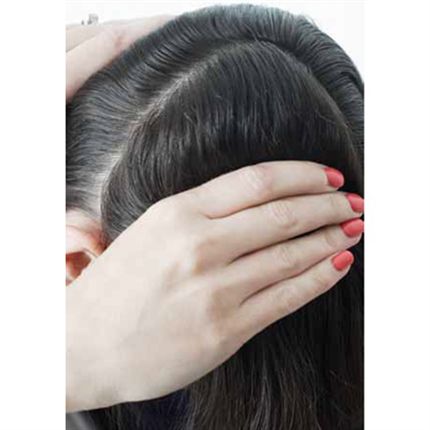5 Expert Tips for Better Gray Coverage
We know you love mixing up fun, vibrant color formulas for your most adventurous clients, but don’t forget about the service that brings in the big bucks—gray coverage. Although it’s not the most glamorous job, it’s one of the most important, so you have to know how to do it, and do it right! To keep your skills in check, Terri Adams, TIGI® Senior Director of Hair Colour Education and Business Development for the Americas and coverage master, lets us in on all her secrets, so you can help your clients age subtly and keep the gray away, longer!
1. Proper Application
What you’ll normally see in a coverage situation is that people brush on the color, as opposed to scooping and laying it on. When you scoop and lay, you get complete saturation because it pushes the color into the hair, whereas if you’re brushing, it slides up right off the hair shaft—so you don’t get as strong a concentration of color on the hair where you need it.
2. Know Your Brand
To get the best coverage with the brand you’re using, you have to know your manufacturer’s recommended guidelines. Every brand has their own, unique way of creating that perfect recipe for coverage, so you have to know the brand you’re working with and what their recommendation for coverage is.
3. Not all Coverage is Created Equal
Have you ever noticed how some red hair looks dull on the ends, but bright and shiny at the regrowth? That happens when stylists keep the gray coverage formula they’ve used on the regrowth and run it through the ends like they would normal color. That’s okay with browns, and it’s usually okay with golds. But with a redhead, if you’ve already put brown on the ends to cover the gray, when the color is pulled through, it adds more brown and dulls the ends. Solution? Make sure you mix different formulas for the ends and roots. Remember, you’ve got two different symptoms on the head—so you have to treat both illnesses.
4. Identify the Finish
Not everyone wants the same kind of coverage, so consultation is key to establishing what each of your clients want. Some might be looking for complete coverage, while others might prefer a warmer, more natural look. For these clients, consider a demi-permanent hue, which will give you a transitional, “I’m not committed to this coverage” look.
5. Pre-Soften
To enhance the color of hard-to-cover hair (such as coarse, gray hair), sparingly apply 20-volume developer onto the resistant area using a bowl and brush. Leave this on for 5 to 10 minutes while you are mixing your color. Dry the mixture into the hair, and then start your application process. This will help to open the cuticle, allowing color to deposit more effectively.







